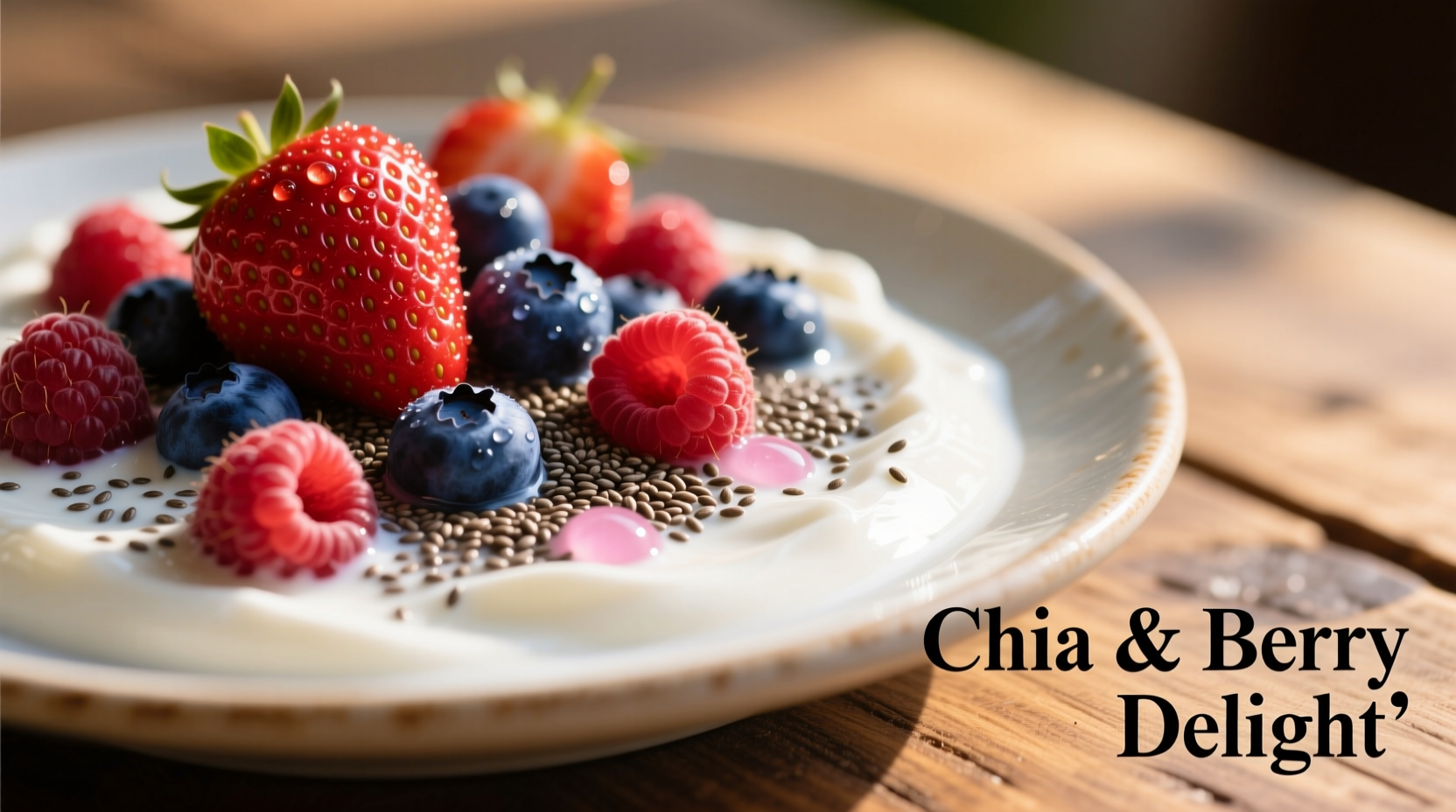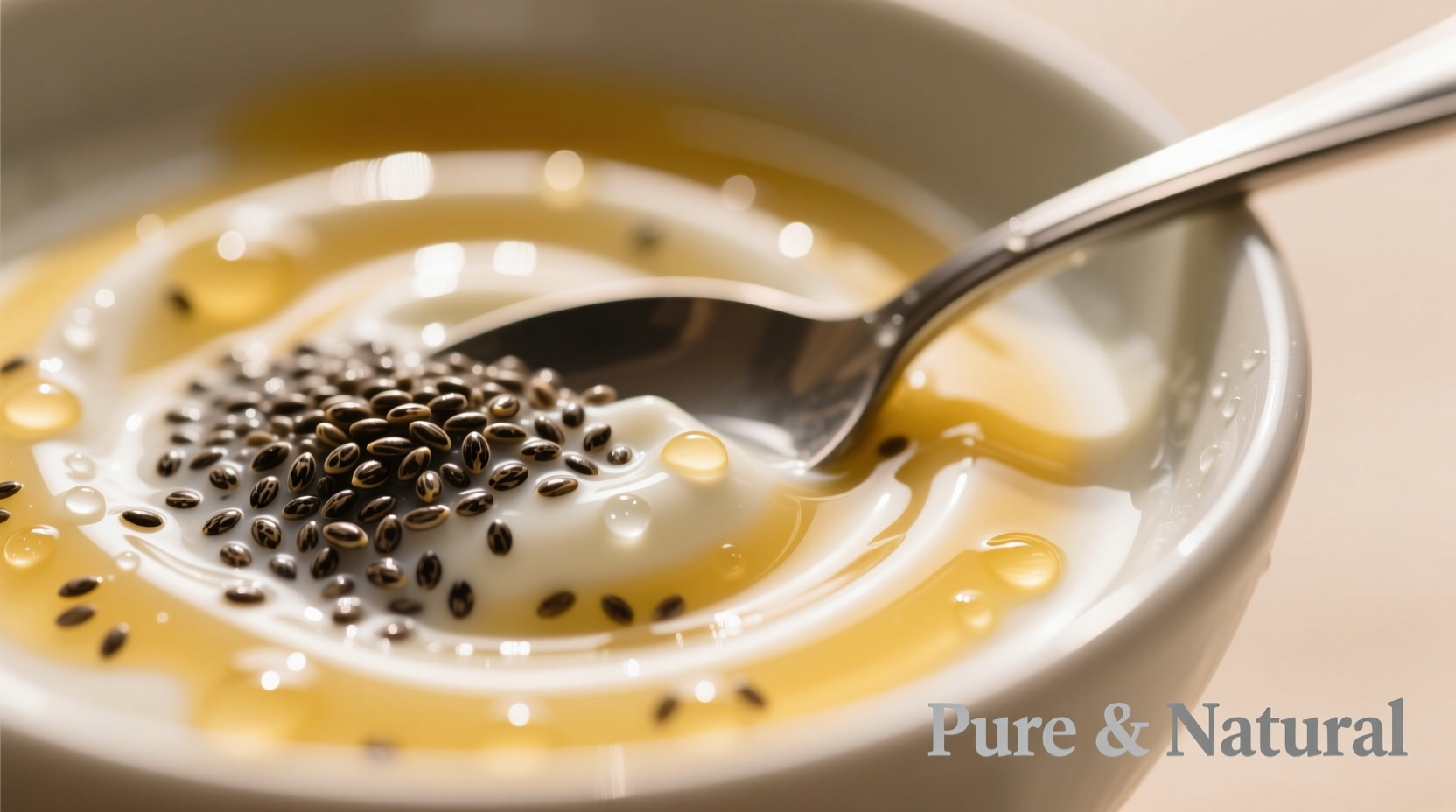Adding chia seeds to yogurt transforms a simple snack into a nutritional powerhouse. This combination delivers complete protein, probiotics, and sustained energy release while requiring minimal preparation. Whether you're seeking a quick breakfast solution or post-workout recovery food, understanding the science behind this pairing unlocks maximum benefits.
The Perfect Pairing: Why Chia Seeds and Yogurt Work Together
Chia seeds contain soluble fiber that absorbs up to 10 times their weight in liquid. When combined with yogurt's natural moisture, they form a gel-like matrix through a process called hydrocolloid formation. This scientific interaction creates the signature pudding texture while slowly releasing nutrients during digestion.
According to USDA FoodData Central, this pairing creates a synergistic nutritional profile. The calcium in yogurt enhances the bioavailability of chia's plant-based calcium, while yogurt's probiotics improve digestion of chia's high fiber content. Registered dietitians at the Academy of Nutrition and Dietetics confirm this combination provides more balanced nutrition than either ingredient alone.
Getting Started: Your First Chia Seed Yogurt Bowl
Creating perfect chia seed yogurt requires precise measurements and timing. Follow these steps for optimal results:
- Measure 2 tablespoons (28g) chia seeds per 1 cup (245g) yogurt
- Mix thoroughly using a whisk to prevent clumping
- Let sit 15 minutes, then stir again
- Refrigerate minimum 2 hours (overnight preferred)
For immediate consumption, use the quick-soak method: Mix chia seeds with a small amount of warm liquid first, then combine with yogurt. This reduces waiting time while maintaining texture.
| Preparation Time | Texture Result | Best For |
|---|---|---|
| 15-30 minutes | Slightly crunchy seeds | Immediate consumption |
| 2 hours | Soft gel coating | Snack bowls |
| Overnight | Creamy pudding consistency | Breakfast preparation |
Nutritional Powerhouse: What You're Actually Consuming
A standard serving (1 cup yogurt + 2 tbsp chia seeds) delivers remarkable nutrition. The National Institutes of Health confirms chia seeds provide the highest plant-based omega-3 content per serving of any food, while yogurt contributes complete protein and calcium.
This combination particularly benefits digestive health. The 11g of fiber from chia works synergistically with yogurt's probiotics to support gut microbiome diversity. Research published in the American Journal of Clinical Nutrition demonstrates this specific fiber-probiotic pairing improves bowel regularity more effectively than either component alone.

Flavor Variations That Actually Work
Professional chefs utilize specific flavor pairing principles when enhancing chia seed yogurt. The key is balancing texture, sweetness, and acidity:
- Classic Sweet: 1 tsp honey + ½ cup mixed berries + ¼ tsp vanilla (adds natural sweetness without refined sugar)
- Tropical: 2 tbsp mango puree + 1 tbsp coconut flakes + pinch of lime zest (creates creamy texture without added fat)
- Savory Herb: 1 tbsp chopped dill + 1 tsp lemon juice + black pepper (perfect for lunch bowls)
For optimal flavor development, add sweeteners after the chia seeds have fully hydrated. This prevents sugar from drawing moisture out of the chia gel matrix, which can create an unpleasant texture.
Troubleshooting Common Issues
Even experienced cooks encounter challenges with chia seed yogurt. Here's how to solve the most frequent problems:
Clumping: Always sprinkle chia seeds slowly while whisking vigorously. If clumps form, blend briefly with an immersion blender—this won't damage the nutritional profile as confirmed by food scientists at Cornell University's Food Lab.
Too Thick: Add liquid (milk, water, or fruit juice) 1 tablespoon at a time while stirring. The ideal consistency should coat the back of a spoon but still flow slowly.
Digestive Discomfort: Start with 1 tablespoon chia seeds daily, gradually increasing to allow your digestive system to adjust to the high fiber content, as recommended by the International Foundation for Gastrointestinal Disorders.
When This Combination Might Not Work For You
While generally beneficial, certain individuals should modify or avoid this combination:
- Those with diverticulitis should consult their physician before consuming chia seeds
- People on blood thinners should monitor chia seed consumption due to omega-3 content
- Individuals with dairy intolerance can use coconut or almond yogurt alternatives
The FDA advises that chia seeds may interact with certain medications including blood pressure drugs and diabetes medications. Always consult your healthcare provider before making significant dietary changes.
Advanced Techniques for Food Enthusiasts
Professional chefs employ these techniques to elevate chia seed yogurt:
- Layered Parfaits: Alternate chia yogurt with fruit compote in clear glasses for visual appeal
- Temperature Play: Serve chilled base with warm fruit topping for textural contrast
- Flavor Infusion: Steep chia seeds in herbal tea before adding to yogurt for subtle flavor variations
For optimal probiotic retention, add chia seeds to yogurt after fermentation rather than during the yogurt-making process. This preserves more live cultures, as demonstrated in research from the Journal of Dairy Science.











 浙公网安备
33010002000092号
浙公网安备
33010002000092号 浙B2-20120091-4
浙B2-20120091-4